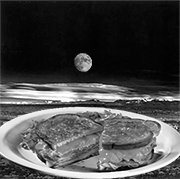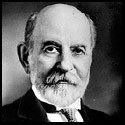|
Clayton Bigsby posted:As for names, Zeiss is still using cool names. Distagon, Makro-Planar etc. The Zeiss lens names designate the lens arrangement/type of lens. It's just a coincidence they generally sound pretty cool.
|
|
|
|

|
| # ? May 17, 2024 21:54 |
|
Shmoogy posted:The Zeiss lens names designate the lens arrangement/type of lens. It's just a coincidence they generally sound pretty cool. Well, it is not like the other manufacturers just pulled words out of their butts to make their lenses sound neat. E.g. Apo-Grandagon meant apochromatic wide angle.
|
|
|
|
Get in the noctogon.
|
|
|
|
Grandagon versus Super Angulon sounds like a Japanese pro wrestling match.
|
|
|
|
Skopar! Voigtar! Noctilux! Flektogon! Hektor?
|
|
|
|
Cut that out atomicthumbs, you'll awaken the elder gods.
|
|
|
|
I thought he was reciting Pokemon names there for a bit 
|
|
|
TomR posted:Cut that out atomicthumbs, you'll awaken the elder gods. How bad can the elder gods of photography really be?
|
|
|
|
|
Prathm posted:How bad can the elder gods of photography really be? Ken Rockwell
|
|
|
|
Is there any decent iOS app that I can use to control a USB-connected digital camera? I want to connect my iPad to my Canon S95 using the USB connection kit to frame shots and fire the shutter from the iPad.
|
|
|
|
Whats the best way to shoot a timelapse with changing light conditions (day to night, vice versa)? AV mode? I'm thinking full manual would net you progressively more unfixable images.
|
|
|
|
Aatrek posted:Is there any decent iOS app that I can use to control a USB-connected digital camera? I want to connect my iPad to my Canon S95 using the USB connection kit to frame shots and fire the shutter from the iPad. evil_bunnY fucked around with this message at 18:04 on Nov 15, 2011 |
|
|
|
I just ran a quick lens comparison and the results surprised me. In Aperture mode at ISO 100 with a tiny 50mm prime set to f/4 the shutter speed is estimated at 1/30. Replacing it with a somewhat bulky zoom lens at f/4 the shutter speed also comes out to 1/30. How can that be ? I'd expect the zoom lens to have a lot more elements and associated light loss- shouldn't the EV be different ?
|
|
|
|
I'm pretty sure F/4 is F/4 regardless of how many elements it has to go through.
|
|
|
|
Olde Weird Tip posted:I'm pretty sure F/4 is F/4 regardless of how many elements it has to go through. That's correct, if it's f/4 it's f/4.
|
|
|
|
Well it's close enough anyway.
|
|
|
|
Olde Weird Tip posted:I'm pretty sure F/4 is F/4 regardless of how many elements it has to go through. My understanding of f/4 is that it's a geometric ratio (aperture diameter over focal length) only. Yet the result I am seeing makes it look like an absolute measure of light transmission. Googling t-stops I came across some notes that found up to 1-stop difference between zooms and primes. That's why I am surprised not to see any here.
|
|
|
|
Cross_ posted:My understanding of f/4 is that it's a geometric ratio (aperture diameter over focal length) only. Yet the result I am seeing makes it look like an absolute measure of light transmission. It's a ratio with respect to the focal length of the lens, which should yield a fairly consistent amount of light in. Most lenses are not exactly the focal length they say they may be, but they're very close (75-300 may be 76-293)-- That, and I'd imagine some other small differences are what evil suggests, in that it's close enough. e: dukeku posted:The error between f-stop and t-stop is more related to light loss through multiple elements than it is to 'incorrect' focal lengths. I meant a potential exposure difference from two lenses at the same aperture. I know/knew that tstop/fstop difference was that tstop takes into account the light lost while traveling through the elements in the lens. Shmoogy fucked around with this message at 01:14 on Nov 15, 2011 |
|
|
Cross_ posted:My understanding of f/4 is that it's a geometric ratio (aperture diameter over focal length) only. Yet the result I am seeing makes it look like an absolute measure of light transmission. Googling t-stops I came across some notes that found up to 1-stop difference between zooms and primes. That's why I am surprised not to see any here. Was your zoom set to 50mm in that test? I think the amount of light is related to the size of the opening, and in a 50mm lens, F/2 should mean you've got a light-entrance pupil 25mm in diameter. In a 20mm lens, F/2 means a 10mm entrance pupil. I'd expect that to make the biggest difference - or at least more than minor variation caused by imperfect transmission in lens elements.
|
|
|
|
|
Shmoogy posted:It's a ratio with respect to the focal length of the lens, which should yield a fairly consistent amount of light in. Most lenses are not exactly the focal length they say they may be, but they're very close (75-300 may be 76-293)-- That, and I'd imagine some other small differences are what evil suggests, in that it's close enough. The error between f-stop and t-stop is more related to light loss through multiple elements than it is to 'incorrect' focal lengths.
|
|
|
|
Cross_ posted:My understanding of f/4 is that it's a geometric ratio (aperture diameter over focal length) only. Yet the result I am seeing makes it look like an absolute measure of light transmission. Googling t-stops I came across some notes that found up to 1-stop difference between zooms and primes. That's why I am surprised not to see any here. As for your second question it's two fold. First, the light lost is minimal for each piece of glass it passes through. You can actually look up MTF charts for lenses and any decent one is at .9 or above in the center. Secondly, a decrease of one stop means you have lost half the light. This means that even a fairly large decrease in light through the lens won't present a large noticeable change.
|
|
|
|
There is a common misconception that the f-number is defined as focal length divided by physical aperture. It is actually focal length divided by the diameter of the entrance pupil.
|
|
|
|
Clayton Bigsby posted:There is a common misconception that the f-number is defined as focal length divided by physical aperture. It is actually focal length divided by the diameter of the entrance pupil.
|
|
|
|
Apologies, but I have a hideously newbie question. I was going to post it in the Nikon thread, but it's very general. I currently have a Nikon D3100, with a couple of kit lenses that I'm getting accustomed to using. I'm still very much a beginner, and the camera is entry level enough for me to get to grips with the various manual functions. One thing I've noticed, however, is that on other lenses (not my kit ones), there is a little slider in the lens that goes up to infinity. Now a little bit of investigation led me to find that this has something to do with the lens focus. I'm a little confused because my current lenses don't have it. In my simpleton mind, focusing is just a matter of selecting a focus mode on the camera (After some advice from the Nikon thread, I'm now experimenting with the single point) and focusing with the half press. Would those type of lenses work on my camera? Again, I realise how retarded this will sound to most of you, but I'm perplexed and drowning in a sea of ignorance right now.
|
|
|
|
tifoso posted:Apologies, but I have a hideously newbie question. I was going to post it in the Nikon thread, but it's very general. Newer G and kit lenses built for AF-S don't have the focus distance markings on them like older lenses do. The focus ring is still there though. Your old lenses, assuming they are Nikon, should mount, but probably won't autofocus, and potentially won't meter on your D3100.
|
|
|
|
tifoso posted:Apologies, but I have a hideously newbie question. I was going to post it in the Nikon thread, but it's very general. G lenses will autofocus perfectly fine on your D3100, but they do not have distance markings. D lenses will not autofocus, but they have distance markings. Not sure if you will be dealing with anything older than that. This is not a problem for wider lenses. I used the 20mm 2.8 all of the time on my D3000 with no problem at all. However, I would under no circumstances recommend trying to use anything with a 1.8 or 1.4 aperture. I also would not recommend trying to use something like the 80-200 2.8D. Basically, stick to G lenses. If you want to try a D lens, go as wide as you can, but again, stick to autofocusing lenses for now. Or pick up a cheap film camera to play with those old D lenses.
|
|
|
|
Plenty of G lenses have distance markings, what are you guys talking about?
evil_bunnY fucked around with this message at 18:06 on Nov 15, 2011 |
|
|
|
evil_bunnY posted:Plenty of G lenses have distance markings, what are you guys talking about? Sorry, this is right, the first lens that popped into my head was the 35mm 1.8, which does not have distance markings. D lenses stop at infinity when manually focusing though, G lenses do not.
|
|
|
|
tifoso posted:One thing I've noticed, however, is that on other lenses (not my kit ones), there is a little slider in the lens that goes up to infinity. Now a little bit of investigation led me to find that this has something to do with the lens focus. I'm a little confused because my current lenses don't have it. In my simpleton mind, focusing is just a matter of selecting a focus mode on the camera It's for manual focus.
|
|
|
|
Sevn posted:G lenses will autofocus perfectly fine on your D3100, but they do not have distance markings. Thanks for the feedback everyone. One quick question, to reaffirm my daftness, what do you mean by 'wider' lenses?
|
|
|
|
tifoso posted:Thanks for the feedback everyone. One quick question, to reaffirm my daftness, what do you mean by 'wider' lenses? Ones with a lower focal length. A standard lens is 50mm which roughly equates to the field of view of the human eye. A wide-angle lens (<50mm) will give you a more distorted, wider field of view than the human eye. An extreme example of this is a fish-eye lens. edit: Wikipedia link: http://en.wikipedia.org/wiki/Focal_length#In_photography
|
|
|
|
tifoso posted:Thanks for the feedback everyone. One quick question, to reaffirm my daftness, what do you mean by 'wider' lenses? By "wider" he means a more wide-angle lens, or generally any lens less than 50mm (or ~35mm on a DX body). edit: beaten by a minute!
|
|
|
|
David Pratt posted:Ones with a lower focal length. A standard lens is 50mm which roughly equates to the field of view of the human eye. A wide-angle lens (<50mm) will give you a more distorted, wider field of view than the human eye. An extreme example of this is a fish-eye lens. Regarding this, one thing I've noticed is that the focal length that "matches" my open eye to my view finder eye is actually 70mm (on a full frame), almost bang on, 50mm produces a slight desynchronization between the two. Do I have funky eyes or is it because the focal plane is actually a little bit more forward than that of the eye or what?
|
|
|
|
You probably have tunnel vision.
|
|
|
|
your eyes are messed up bro
|
|
|
|
Paragon8 posted:your eyes are messed up bro Eh, my eyes match up at 80mm - i.e., at 50mm on my 7D. I consider this an evolutionary advantage. EDIT: The more I read into this, the more confused I get. Are we talking field of vision or magnification? William T. Hornaday fucked around with this message at 19:25 on Nov 16, 2011 |
|
|
|
William T. Hornaday posted:Eh, my eyes match up at 80mm - i.e., at 50mm on my 7D. I have no idea I just jumped on the opportunity to make a guy feel like a mutant
|
|
|
|
A noble endeavor. Carry on.
|
|
|
|
I've always been confused by that too, so called "normal" focal lengths in no way capture my full field of view with peripheral vision. Your magnification idea actually sounds more likely, that never crossed my mind.
Remy Marathe fucked around with this message at 21:30 on Nov 16, 2011 |
|
|
|

|
| # ? May 17, 2024 21:54 |
|
It's magnification. If you keep your eye open and move a 50mm lens viewfinder in front of it, things shouldn't move to or away from you.
|
|
|



























